In the article about St. James Piccadilly, I mentioned the reredos carvings consisting of layers. Tico Vogt, an excellent furniture builder btw, asked for more information about what I meant.
What little I know of this I learned from David Esterly’s books. My carving experience is with low relief forms, not the extremely deep and thick high relief forms that Gibbons carved. Esterly has the experience of carving high relief and actually carved a replacement for a carving lost in a fire at Hampton Court Palace. See either of his books for his explanation.
Without using Esterly’s copyrighted material, here’s my interpretation. The problem: How does a carver achieve the extreme “airiness” we see in Gibbons’ work. How can one carve thin leaves and stems that appear to be floating in space without breaking them into many pieces? Undercutting! But, how?
One way is to carve as much as possible from the face of the carving, as all of us do normally. Then, remove the piece from the backing board and carve carefully from the back. This works, up to a point. It doesn’t work when the depth is as deep as some of Gibbons’ pieces. What does a carver do when there are flower blossoms in front of other leaves that are in front of stems that are in front of yet more background material? Or, what does a carver do about a very fragile structure that could be easily broken while working on elements nearby?
Layers. Build the carving up in layers. Here’s an example that I think has as many as three layers. I don’t know for sure. It’s purely my conjecture. At St. James Piccadilly I had the good fortune of being able to move around the work and get pictures from different angles. These two photos show the same cluster of flowers in the middle of the left drop, one photo from the front, the other from its left side. It might be worthwhile taking some time to orient details between the two photos.
I see a number of objects at the very front that have other elements behind them that would be very difficult to carve as a whole. Perhaps the rose blossoms and the pomegranate are separately attached? Maybe that cluster of leaves in the upper right too? See how it has stems hanging down in front of the rose on the right? And to me, it appears that a stem pierces the rose petals and continues down to support two lily blossoms? There are two rather fragile structures on the left too, the cluster of bell flowers and their stems, and another zenia-like flower that we see from the back? Were they carved separately, too?
Below, I’ve colored those same two photos with overlays to highlight the elements or layers that I think were carved separately. Imagine working without those pieces attached, of carving the underlying details, and later attaching the pieces to “assemble” the carving. In the side view photo, look for the central rose. I see behind it a solid object that I’ve colored a darker red. I think that’s a mounting post for the rose. Maybe?
David Esterly actually handled some of the layered carvings from the Hampton Court Palace. He describes the layers as having been nailed together from the back. I imagine more recent carvers probably use wood pegs and glue for attachment.
For yet another example of layering, watch Patrick Damiaens build up a “Supraporte” (Overdoor) carving from multiple pieces, including an overlay which show a person’s initials depicted as ribbons and attached to the central garland. At 2:48 in the second video, Patrick attaches the layer with the initials with wood pegs.
Supraporte Video 1 — Supraporte Video 2 — descriptive blog entry
Esterly mentions another reason to carve with layers. We don’t know how many people Gibbons employed, but we do have a sense of how much he produced, a staggering number of carvings in the span of only a few decades. He didn’t produce all this work alone. Esterly suggests that since many of these vertical drops have three prominent clusters, if one imagines them being carved in two layers, Gibbons could employ as many as 12 people to carve a pair of vertical drops. Maybe layering was a labor multiplier?
Oh, by the way…
I read a lot of woodworking blogs and often see ancient woodworking drawings, some in the form of woodcuts. I stepped off the the train at the Charing Cross tube station (Northern line, southbound station) and stopped immediately in my tracks upon seeing these “woodcut” murals. The “woodcut” drawings illustrate the construction of a monument to Eleanor Cross that once stood at the Charing Cross railway station in London. Eleanor Cross, also known as Eleanor of Castile, was the queen consort to king Edward I. She died in 1290 while she and Edward were away from London. Edward commissioned 12 monuments to her, one for each day of the funeral procession journey back to London. This was the 12th and last. David Gentleman created the drawings for these underground / subway murals in 1978.
More images at David Gentleman’s site.
“Eleanor’s Cross” as it appears today.
P.S. How did Charing Cross get its name? Charing was the name of a medieval hamlet in London. After construction of this monument to Eleanor Cross, the location became known as Charing Cross.
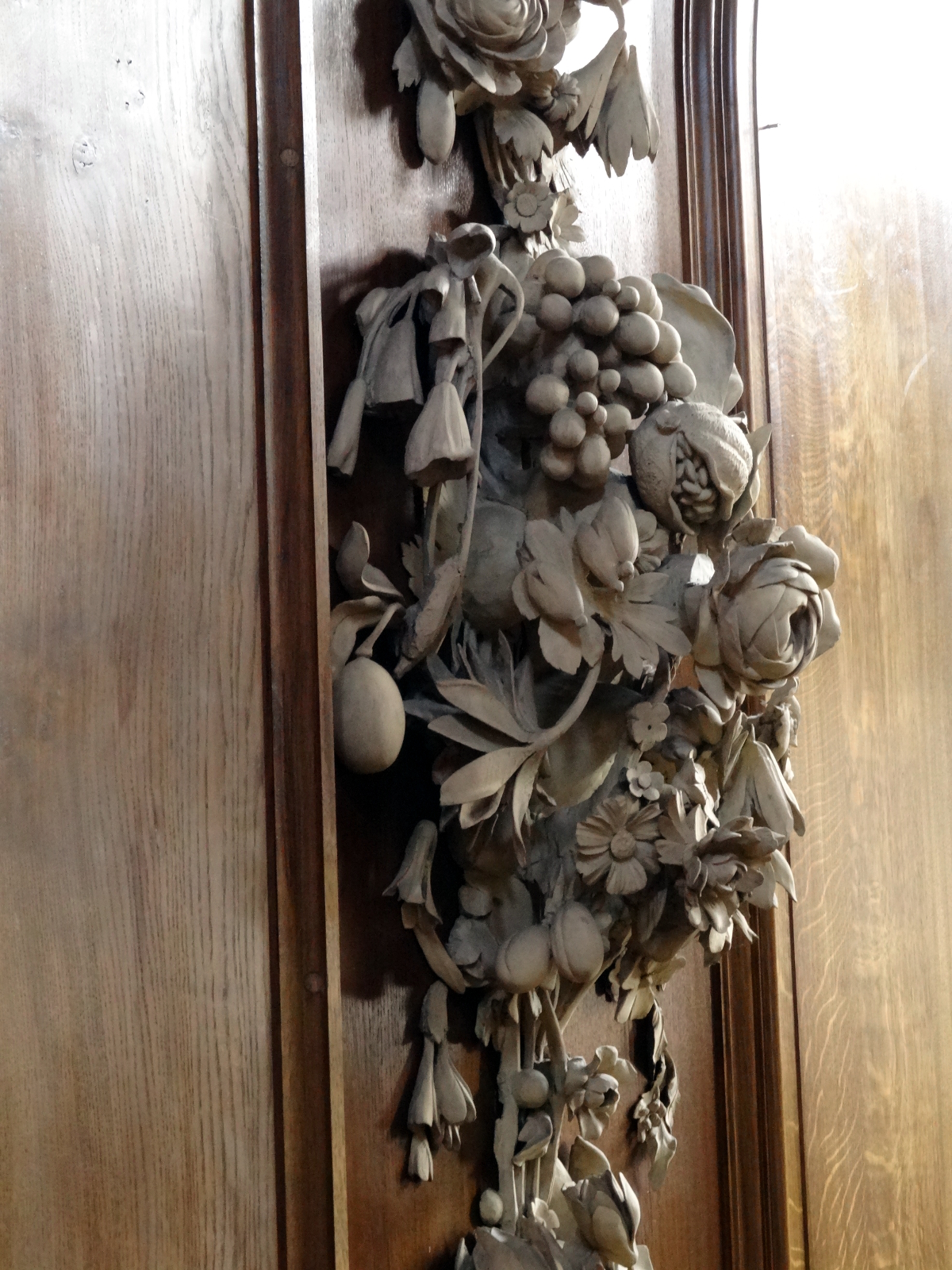
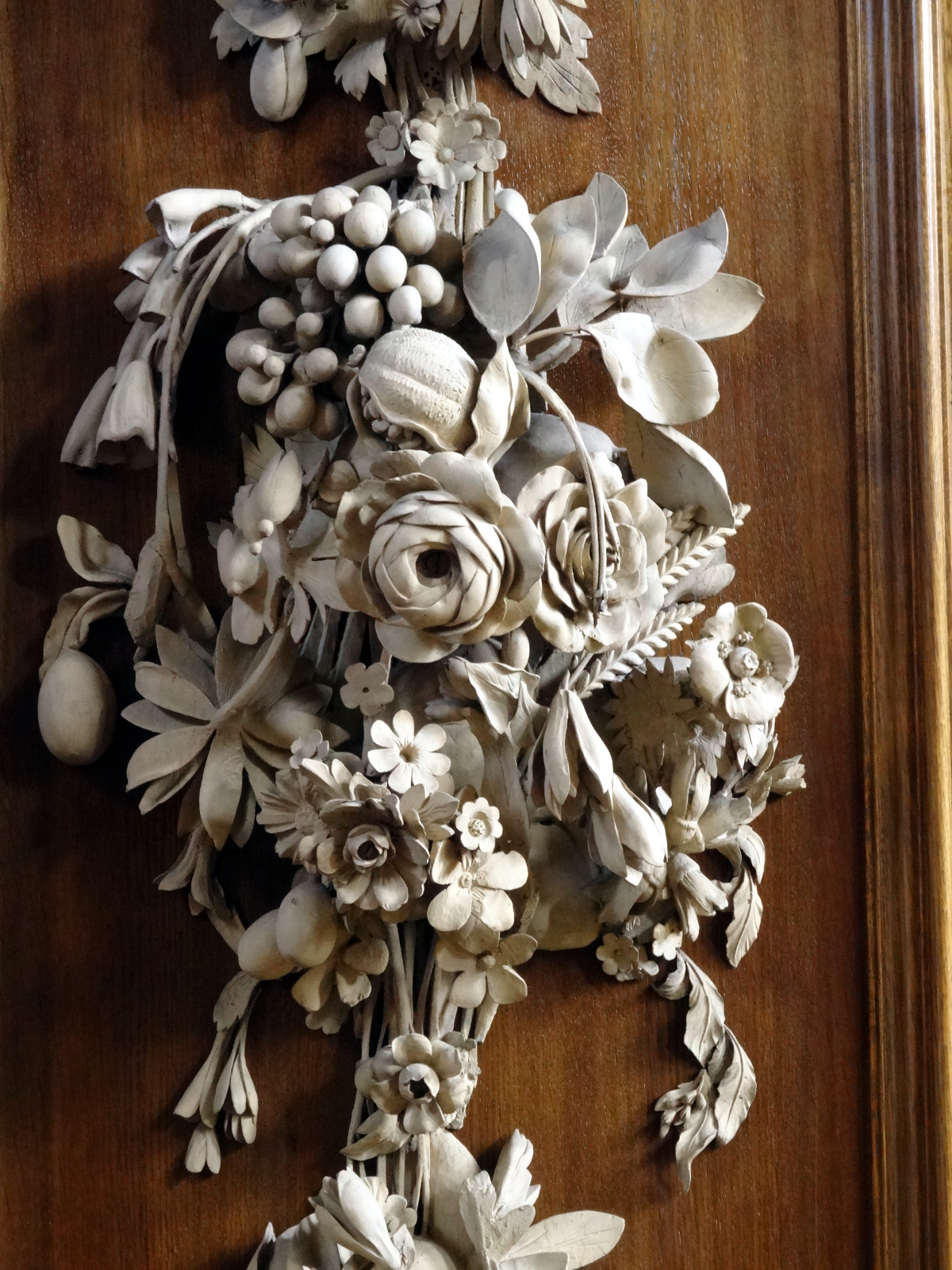
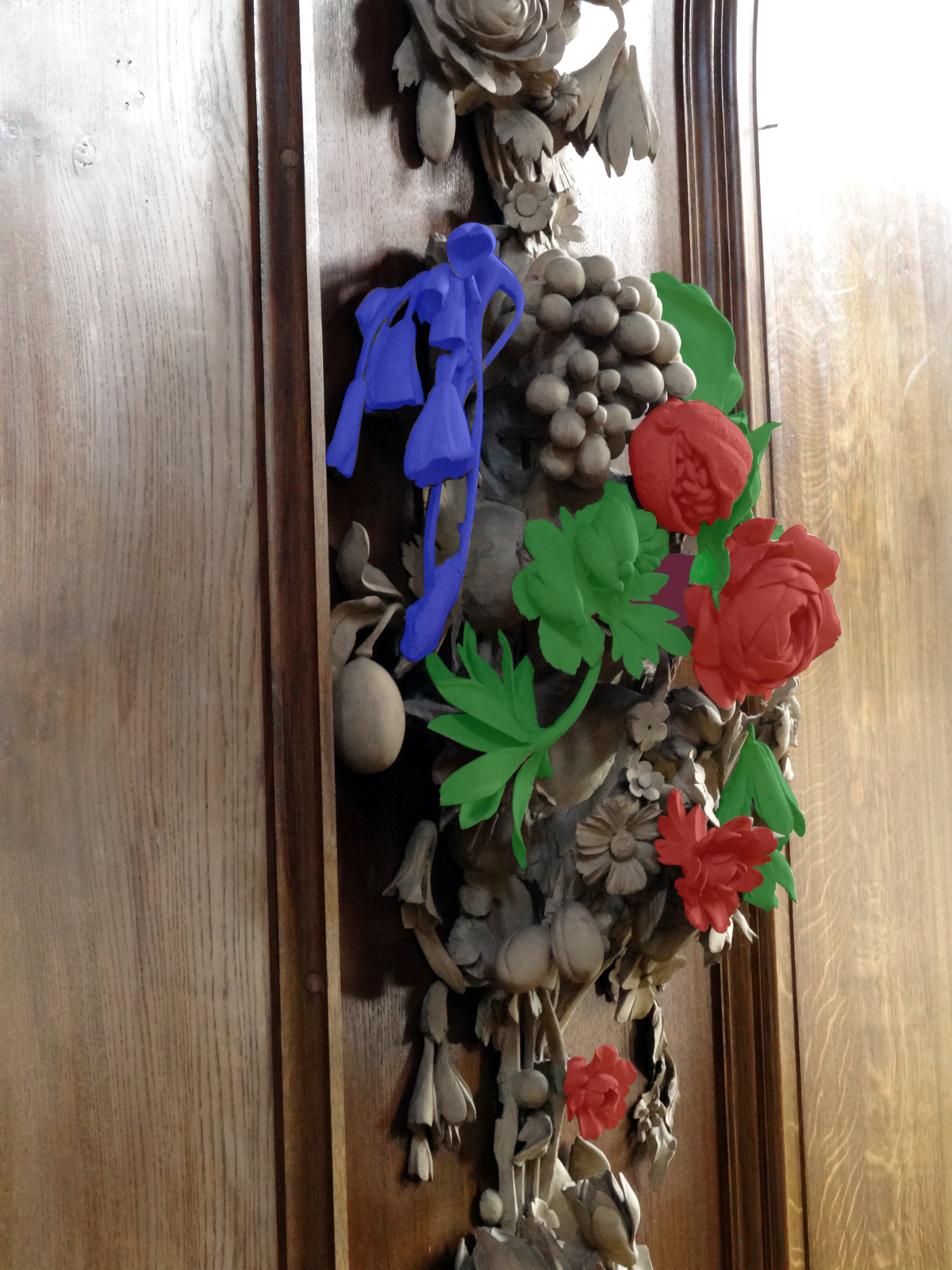
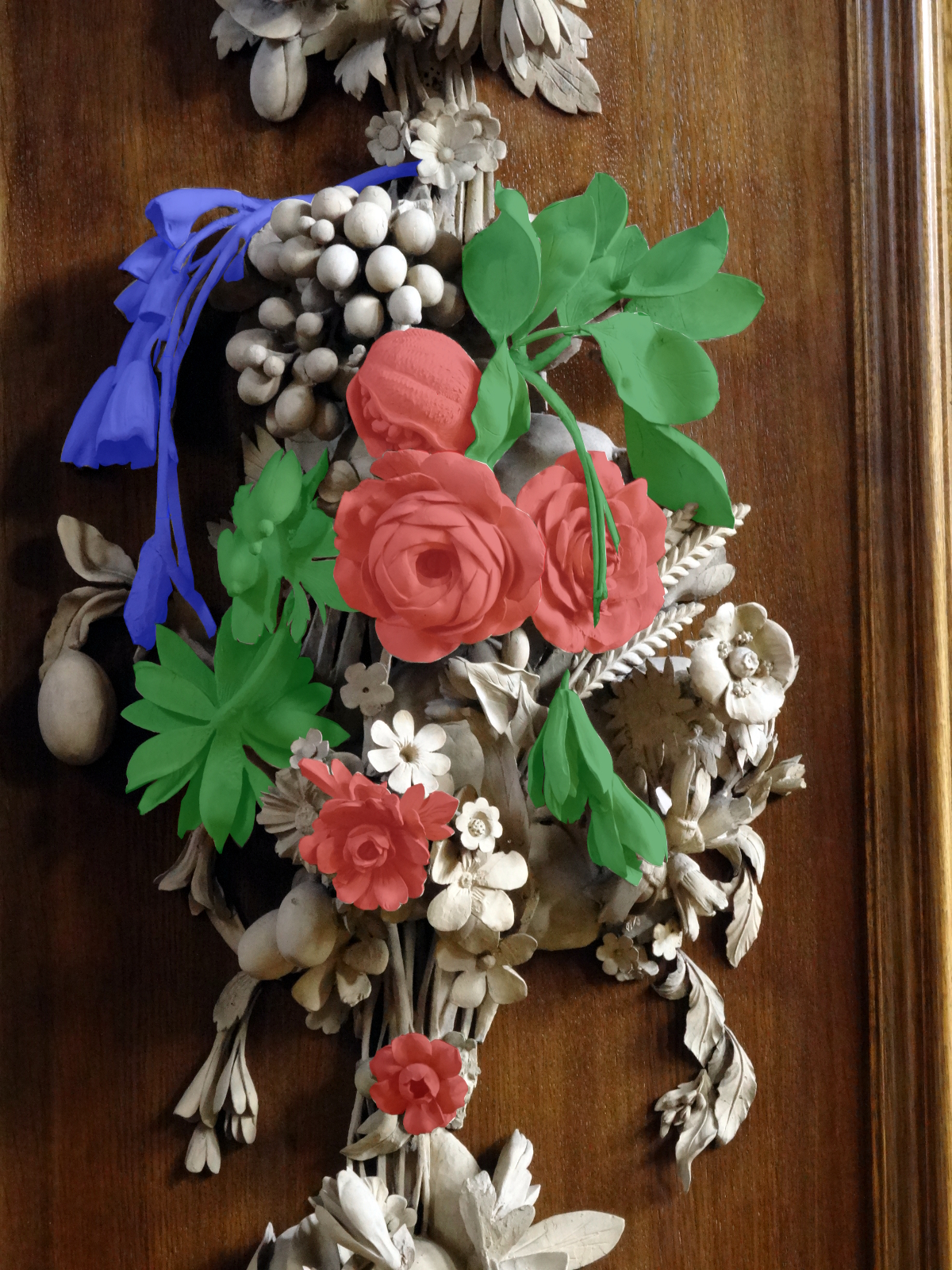
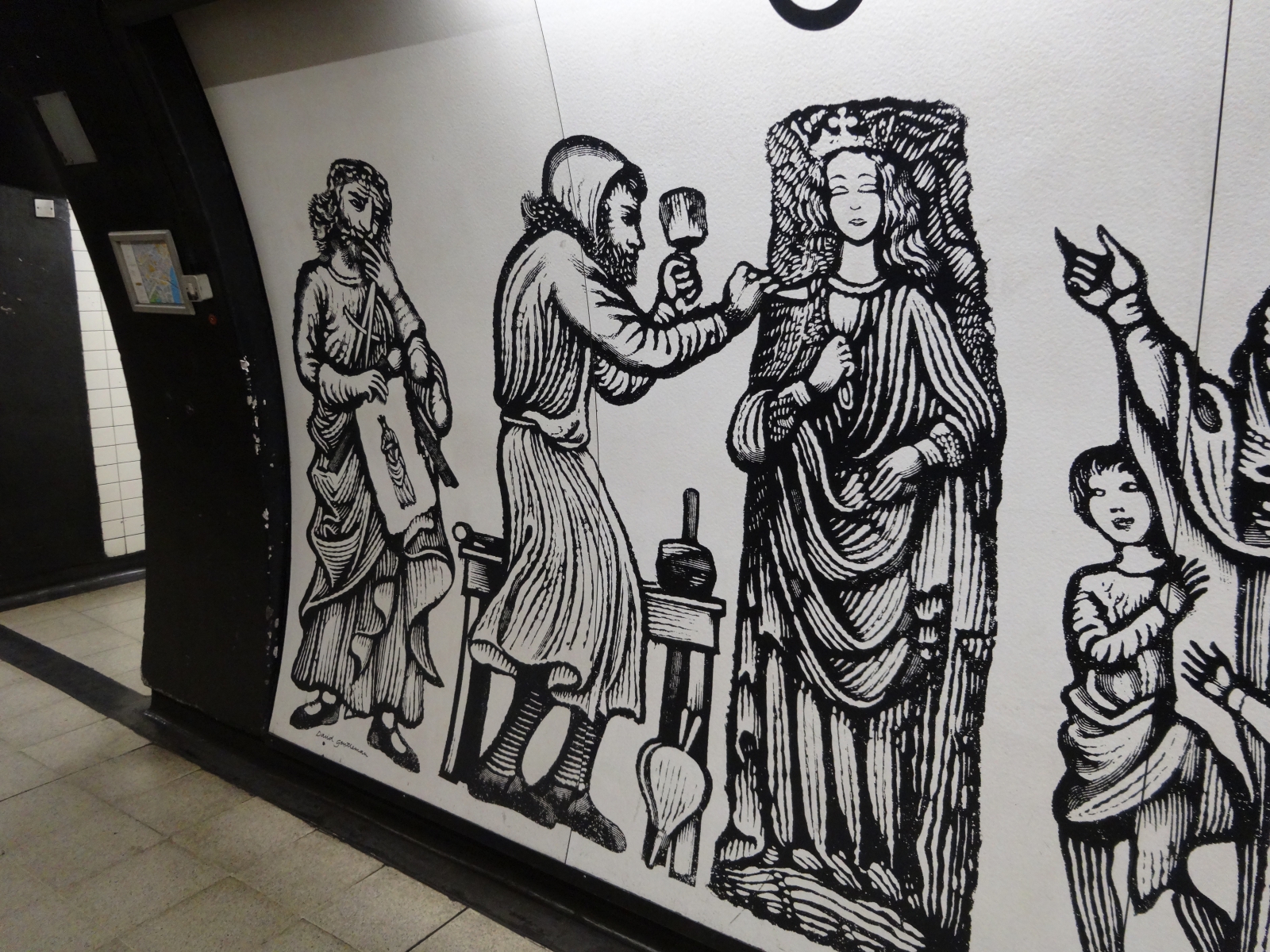
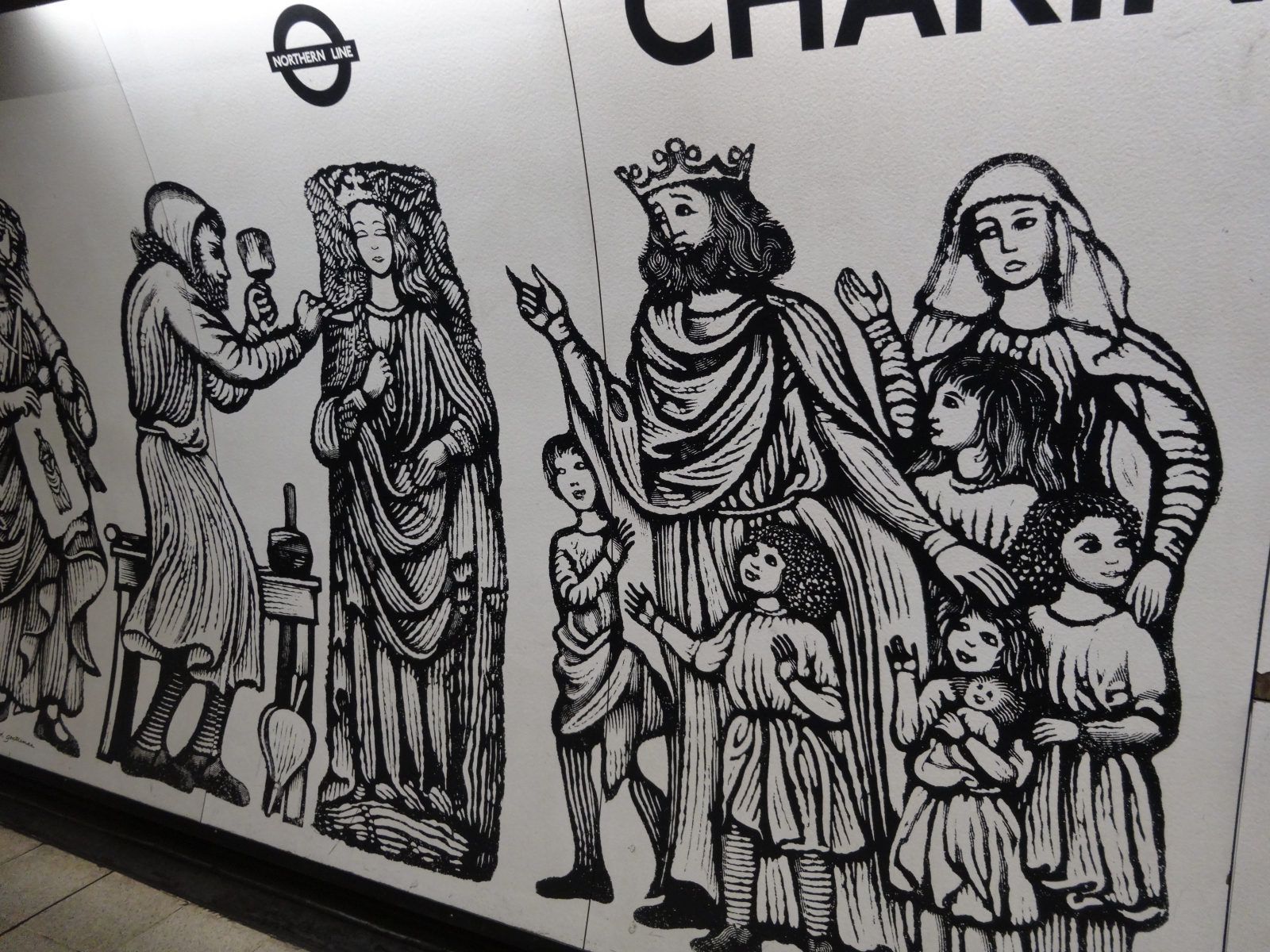
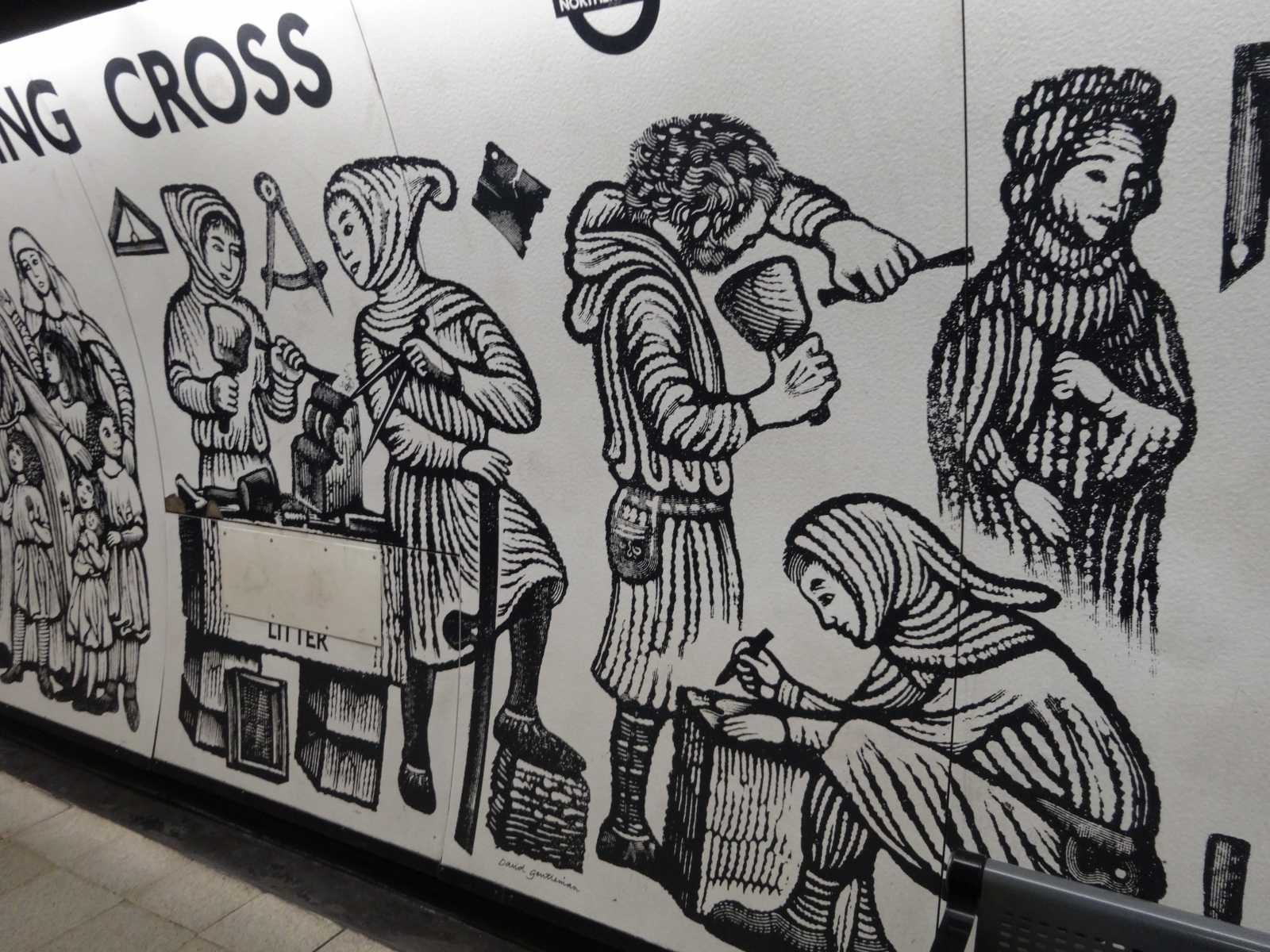
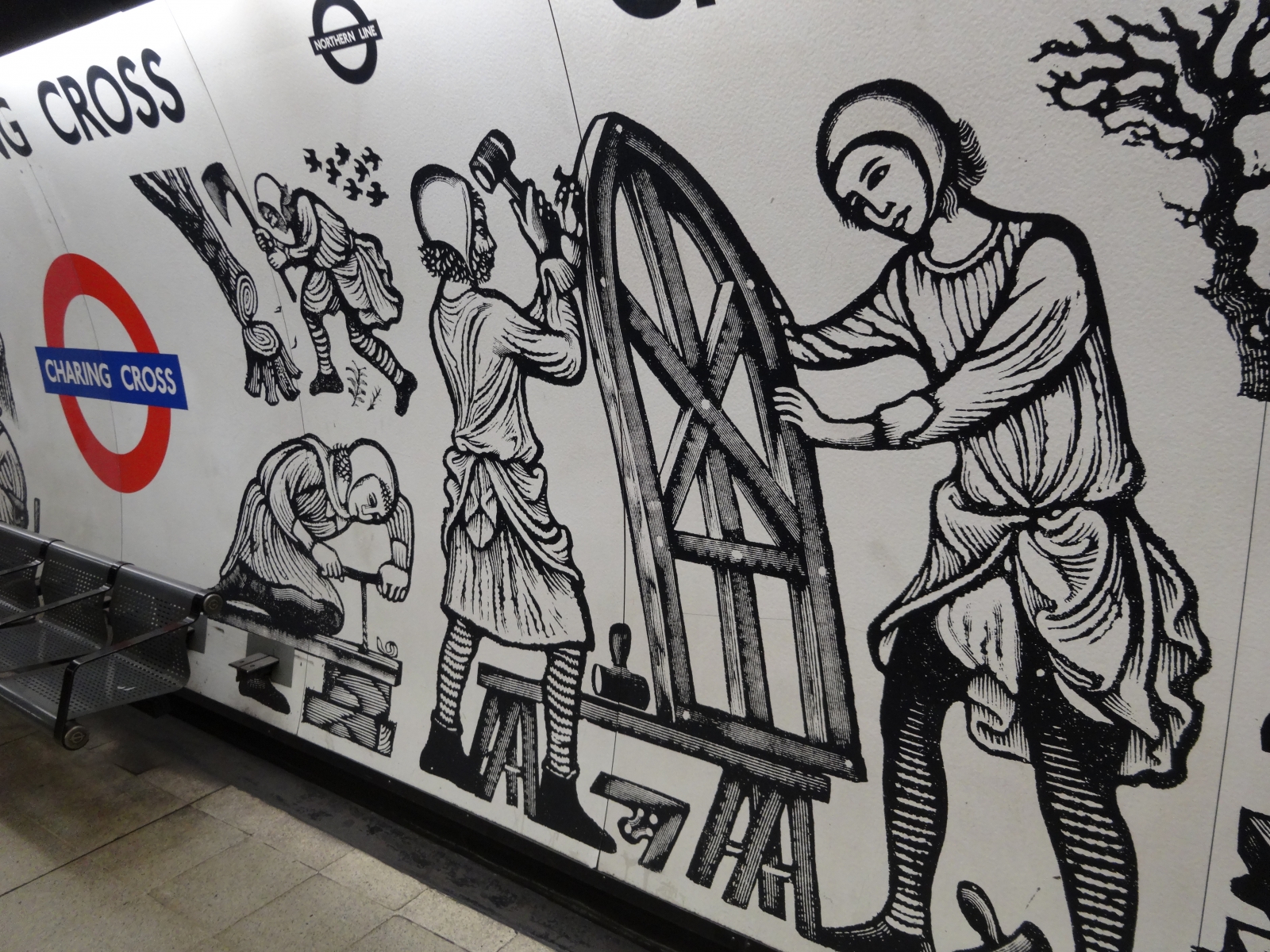
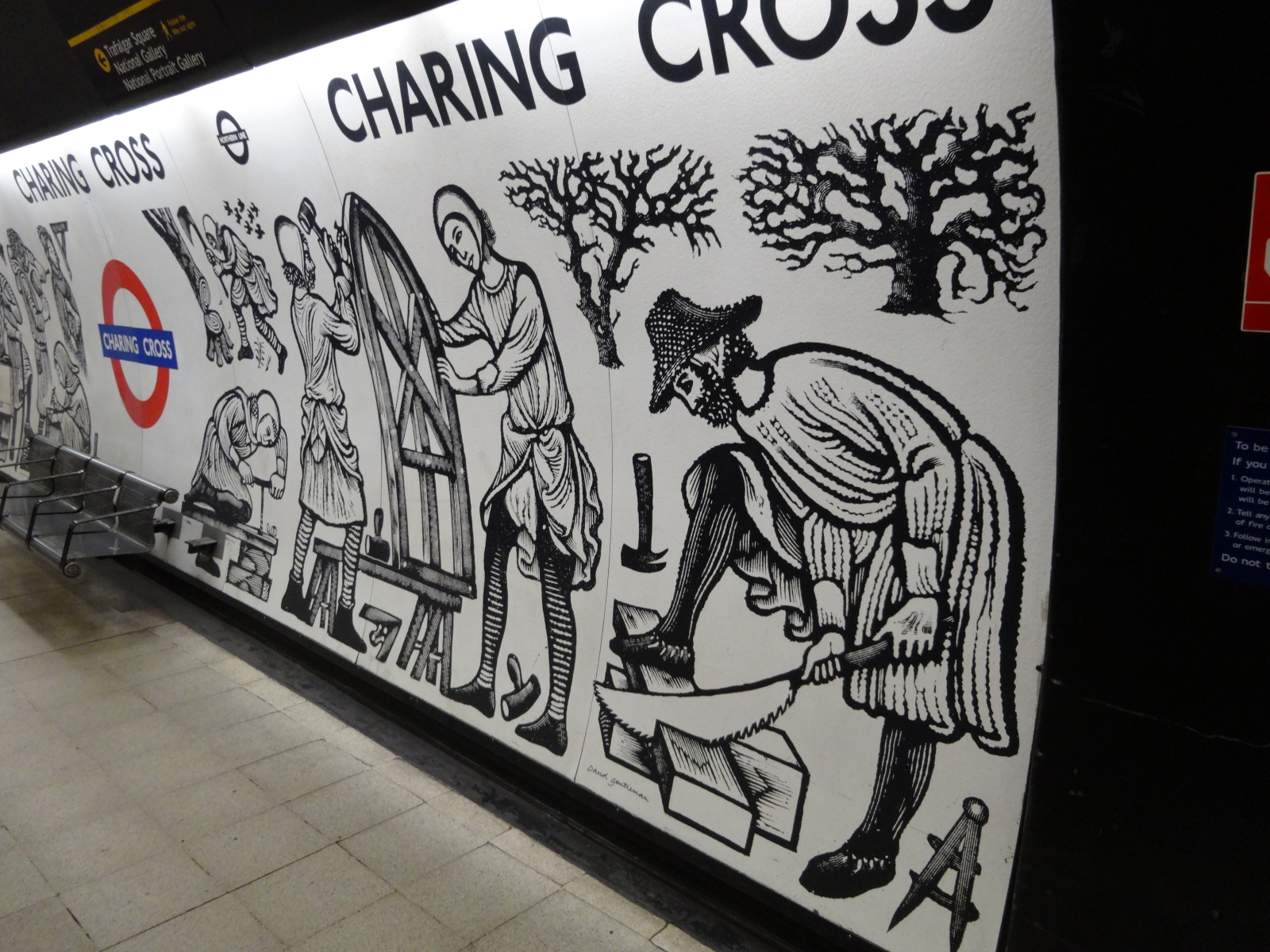
A good try about carving in layers. In fact Gibbons developed his method over some years. Piccadilly is 1684/5 so early. As at Windsor many sections of the carving are glued together, and can therefore be carved as pieces are glued on. there is a layer structure at Piccadilly but of much thicker pieces and yes there is a post behind the rose. At Hampton Court (1690s), and elsewhere, the layers are thinner (max 2 inches generally) and are carved completely separately and then nailed on FROM THE FRONT. In the later carvings the layers are very easy to see from the side but completely hidden in the design from the front. I will send you some photos if you like.
Thank you Mr. Luard!
One can only get so close to most of these carvings, and not being able to tell from 6 feet away, I speculated about possible layers.
Thanks for the clarification, and it makes good sense with what I generally know about Gibbons, in that he had a more mature group of people assisting him by the 90s and they had probably refined some of the layering techniques.
I always welcome more photos, especially if I can publish them here. The entire purpose of this site is to offer more photos of Gibbons’ work than we usually see in the postage stamp sized images in books. I’ll contact you separately to give you an email address.
Thanks!